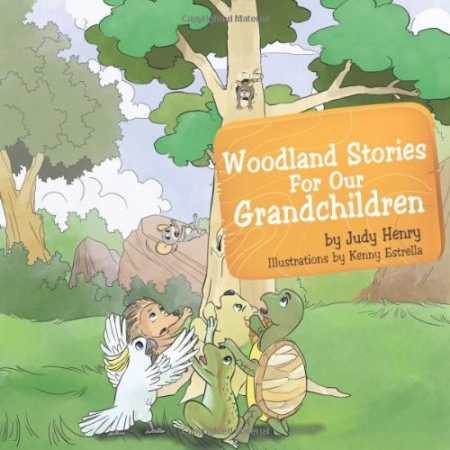Woodland Stories for Our Grandchildren
Children learn to value their differences through seven tales of Australian animals.
Judy Henry presents seven interesting, colorfully illustrated animal stories—most of them dealing with differences—in the enchantingWoodland Stories for Our Grandchildren.
Her forest animals are personified, thinking and acting like people, but exhibit characteristics of their species. Timothy the Tortoise wants to see the countryside, and his dream is to ride in a hot-air balloon, but his short legs keep him near the ground. In the end, he finds a surprising resolution to his frustration.
In another story, Rider the Sugar Glider is jealous that Pete the Pesky Possum (Australian sugar gliders are cousins to the possum) can hang by his tail and play dead. Rider puts slippery cooking fat on Pete’s preferred tree branch. Instead of the expected bitterness, the story takes a constructive twist.
Six of the seven stories start by describing the protagonist. Henry writes that Rowdy the Cockatoo’s “beautiful feathers were snowy white, and on his head, he proudly wore a cocky’s comb.”
The theme of six stories is coping with differences, while the theme of one story (about a frog) emphasizes persistence. Unexpected resolutions contribute to Henry’s success in stressing the values she focuses on in each story. When Winsome Wombat gets stuck in the entry passage to Tyson the Python’s burrow, Tyson “realized that without arms he couldn’t pull her free.” He knows he must get help.
Henry, a resident of New South Wales, grew up in rural areas, which were normal habitats for many animals. She uses species in her stories that she has observed firsthand.
Kenny Estrella’s brightly colored illustrations depict cute animals and attractive scenery. Each story has one full-page illustration. The cover art includes all seven protagonists, with Max the Mouse falling from a tree. Children outside of Australia may be unfamiliar with some of the book’s animals, such as the sugar glider and wombat, and the words “monotreme” (mammals that lay eggs) and “puggle” (in Australia, a baby monotreme) will need to be defined.
Henry frequently uses hyphens instead of em dashes, which can make for a few confusing sentences. For example, she writes that Pete “was loved by everyone-well, almost everyone.”
Youngsters up to about age eight will enjoy Woodland Stories for Our Grandchildren and will learn that dissimilarities are part of life.
Reviewed by
Norma Dawn Kellam
Disclosure: This article is not an endorsement, but a review. The publisher of this book provided free copies of the book and paid a small fee to have their book reviewed by a professional reviewer. Foreword Reviews and Clarion Reviews make no guarantee that the publisher will receive a positive review. Foreword Magazine, Inc. is disclosing this in accordance with the Federal Trade Commission’s 16 CFR, Part 255.

